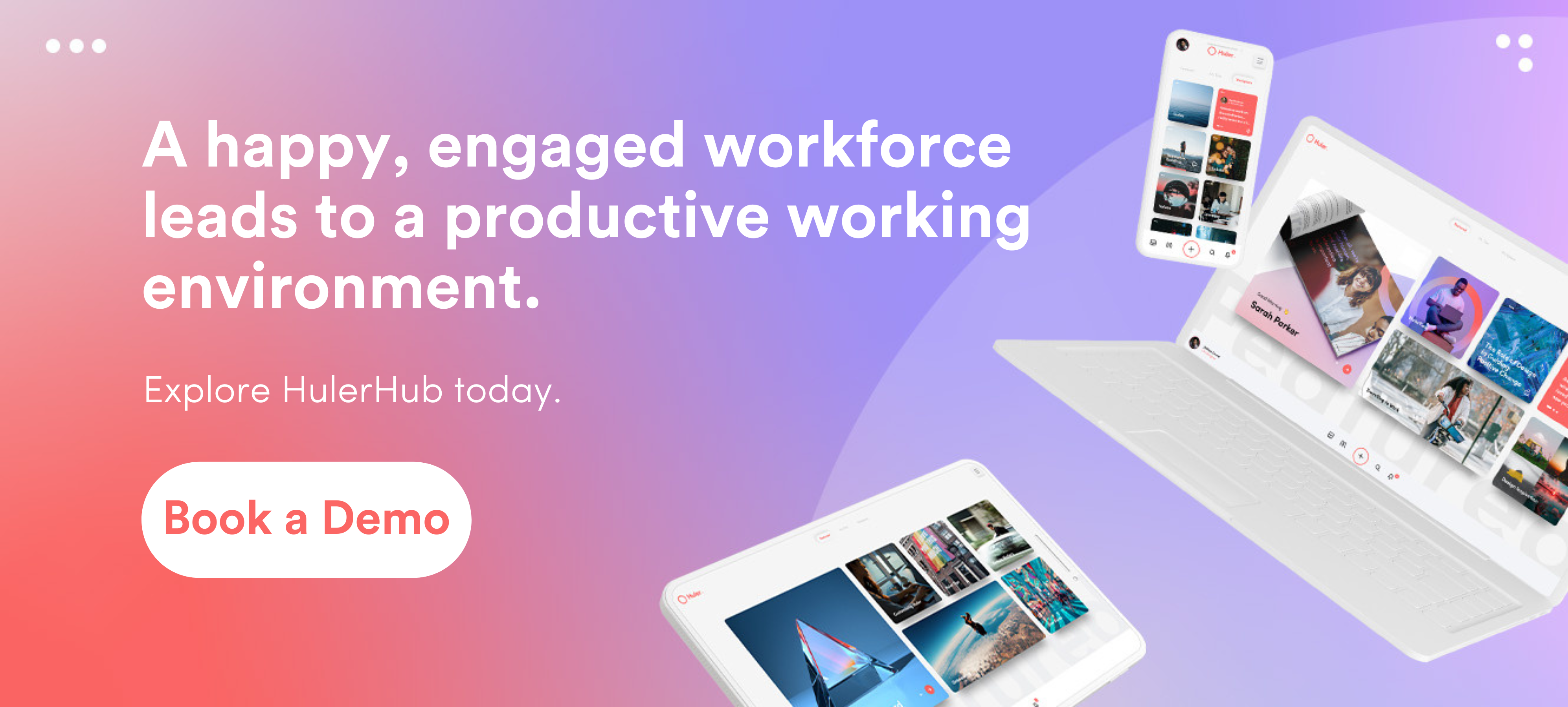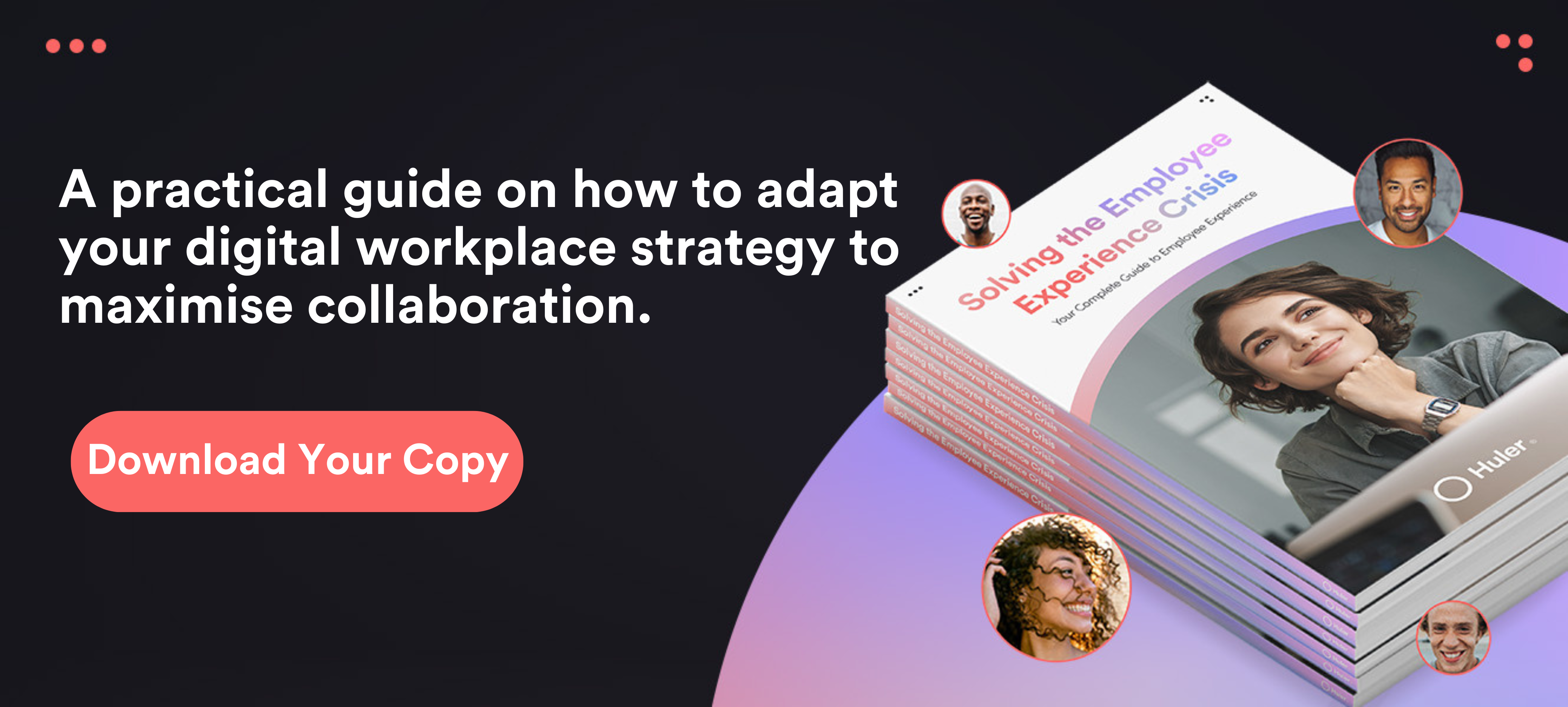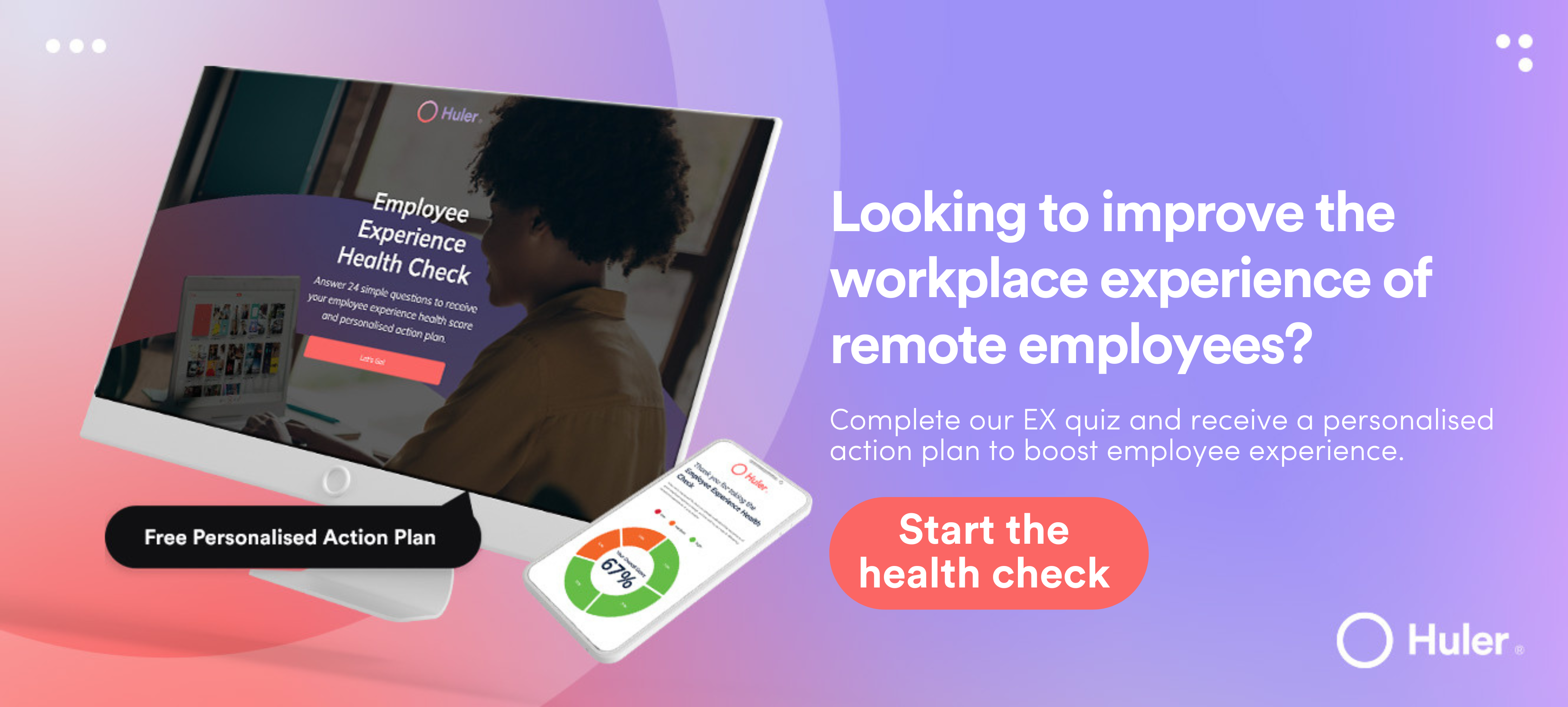Employees are the lifeblood of any business. They often go above and beyond to help their colleagues, deliver work that helps your company grow and create a positive working environment. But if good work goes overlooked, this can lead to discouragement, unease, and loss of productivity and engagement.¹
Recognising employees, through compensation in the form of bonuses or a “well done” from a manager or team leader can help you improve workforce engagement and employee retention² — but peer recognition takes things further. It improves job satisfaction and employee experience, increases commitment, helps reduce work-related stress, and encourages employees to approach new projects with enthusiasm.³
If you want to build a culture of recognition and create a digital workplace your staff loves, you need an engaging peer recognition program. Let’s explore 6 employee peer recognition ideas that can help your staff feel motivated, engaged and happy.
What is peer recognition?
Peer recognition, also called peer-to-peer recognition, is the process of employees publicly recognising each other’s work, skills, and contributions.
Unlike traditional employee recognition programs that give managers and team leaders exclusive responsibility to recognise great work, peer recognition programs let employees be recognised by those who are closest to them on a daily basis, their colleagues.
Why is peer recognition important?
Many companies wrongly consider that good salaries are enough to make their employees feel valued. While salaries are definitely important, recognition is the crucial factor that encourages employees to deliver their best work.
- 82% of people consider recognition important for their work happiness.
- 68% say that public recognition impacts their ability to get raises or promotions.
- 63% of those who are ‘always’ or ‘usually’ recognised for their hard work say that they’re ‘very unlikely’ to seek a new job in the following 3—6 months.
- 32% say that recognition improves the way their peers interact with them.⁴
The good news is that implementing a peer recognition program is easy and intuitive, particularly if you use it within a digital workplace built with recognition features in mind. Here are six ideas to help you create a culture of peer recognition across your organisation, including those working hybrid and remote.
Praise great work — publicly
Everyone wants to be recognised for their hard work. And while private feedback — such as sharing handwritten notes of appreciation — is appropriate in some situations, public recognition can be particularly impactful, especially when it involves all your employees. Public peer recognition helps strengthen the relationships between your staff, which can lead to a company-wide motivation boost.⁵
Publicising recognition helps people feel valued. When team members share positive feedback in public, those who see it tend to share their own praise for the recipient.⁶ And since the recognition is peer-to-peer, it doesn’t feel like a performance review, but an organic expression of gratitude.
But that’s not all: public recognition can also be a cost-effective way to motivate both individuals and teams, as team members who see a colleague being recognised may feel compelled to improve their own performance to receive praise of their own.⁷
Businesses can make peer recognition public by:
- Including recognition in their weekly/monthly newsfeeds.
- Pinning peer recognition apps to employee dashboards.
- Making a habit of sharing positive feedback at strategic times, such as the conclusion of a project or the start of a new quarter.
You can make public recognition a core part of your culture by including recognition features in your digital workspace and calling on everyone in your organisation to share positive feedback.
Include everyone
Inclusivity is important for any modern business with a people-first culture, especially those working in hybrid or remote environments. Even if people work away from the office, they still need to be recognised for their efforts. Being away from their colleagues can create a sense of isolation, lowering their motivation and making it difficult to deliver their best work.⁸
A company culture based on peer recognition helps create a sense of camaraderie and collectivity, and can bridge the gap between virtual and physical workspaces. Here are some steps that help you build an inclusive recognition program:
- Let it develop organically: Peer recognition should evolve organically rather than as a top-down approach. Encourage your employees to recognise the top performers in their teams on your company’s intranet or employee experience platform.
- Praise teams: While you can praise individuals, you can also recognise the efforts of entire teams or departments. This is a good way of making employees feel included even if they’re not recognised individually.
- Avoid recognizing the same people multiple times: Recognising the same people over and over can have a positive effect on their motivation, but it can demoralise team members who feel passed over. Worse, it might foster a sense of resentment rather than togetherness.
Pinning peer recognition apps on your staff’s dashboards is an easy way to make sure that everyone in your organisation can share praise and receive feedback.
Use an employee recognition feature
A dedicated employee recognition feature streamlines the recognition process. Asking your staff to share ad-hoc positive feedback across multiple apps can be impractical: people might not have the time, the ad-hoc nature might make it seem unimportant, the process might be complex — or they might just forget. This can dissuade people from providing praise to a peer.
A good recognition feature takes some of that pressure away. It can do this by:
- Helping your team express themselves: Uses prompts to encourage employees to explain why someone is recognised.
- Integrating with your digital workplace: Seamlessly integrating an employee recognition feature within a digital workplace, and giving it prominence alongside other tools in the workplace, enables employees to find and use it easily and intuitively.
- Providing quick feedback mechanisms: Enables your team members to recognise each other with virtual high-fives, stars, or points.
- Highlights the importance of recognition: Makes recognition central to your company culture, rather than an afterthought.
- Creating a structure for feedback: Simplifying the recognition process by giving your employees a single, structured feature, will help employees feel motivated and comfortable with giving praise to their colleagues.
An employee recognition feature, integrated with your workplace, makes recognition simple. And as soon as one person starts using it, others will too, so everyone gets their share of praise.
This produces a consistent experience for hybrid, remote and in-office workers. With the same process for all employees, everyone’s working off the same page: and hybrid and remote employees won’t miss out on the camaraderie.
Make it fun
Peer recognition doesn’t have to be formal. In fact, it should be easy and engaging so people won’t think of it as a chore, making it more likely for them to participate. Here’s how you make your peer recognition program fun:
- Give it a social dynamic: Enable your employees to like, comment, and tag other people in their positive feedback, just like they would on a social media platform. Not only will this make the experience fun, but it will also help the recipient feel more valued.
- Use emojis, gifs, and images: Let your team members use emojis and gifs to customise their feedback to their personalities.
- Lead by example: Managers have a huge influence on how people share recognition, so they should be the first ones to praise their colleagues. This helps other people know what to do and how to do it.
Celebrate important events and milestones
Your staff’s hard work deserves praise, but so do their achievements and milestones. Celebrating important events like work anniversaries, birthdays, new qualifications, or academic and personal achievements can help bring your team together. This is especially important for hybrid or remote teams who may feel cut off from the rest of their team if these events pass by unnoticed.
An employee recognition feature can help you keep track of milestones and events. Recognising these events might seem small, but if they go by unrecognised it can make employees feel forgotten. But recognising them foster a sense of belonging and value between employees.
Make people aware of it
The success of your peer recognition program depends on whether your staff know it even exists. Seems obvious, right? But if you’re not letting people know about it, it won’t get used. Not only does this lead to a bad ROI, but it’s costing you money in other ways too, as a poor employee experience can lead to higher turnover.
Here’s how you make sure people know about it:
- Bring it up in meetings: Call the program out in meetings by praising one of your top performers.
- Include it in your company newsfeed: Make sure your peer recognition program is mentioned in your regular internal newsletter.
- Place it on your team’s dashboards: Use admin access to pin the employee recognition feature to the homepage of your employees’ digital workspaces, so they see it every day.
- Participate: Make a habit of sharing positive feedback as often as possible. Your employees are more likely to participate if you are.
- Have an official launch: Set a date and create a communications plan. If you make it a big deal, it’ll be a big deal. And if leadership participate and set a good example, employees will be encouraged to join in.
An Employee Recognition Feature — within an Employee Experience Platform
Peer recognition is crucial to modern businesses. It improves employee experience, boosts productivity, and increases employee retention. Peer recognition programs can have a significant impact on employee wellbeing and job satisfaction, two factors that influence your company’s growth and financial performance.⁹
By integrating peer recognition into your digital workplace, you make it easy for your employees to share positive feedback and celebrate achievements, which are important steps in establishing a people-first culture.
HulerHub is an employee experience platform that doesn’t just enable you to host an employee recognition feature but allows you to integrate it within your digital workspace. With HulerHub, you can:
- Make company-wide initiatives visible and instantly accessible through an intuitive, user-friendly interface.
- Provide employees with a quick and easy way to give and get peer-to-peer feedback whenever they want — regardless of where they work.
- Create a centralised hub, aligned with your brand, that acts as a one-stop-shop for the most relevant and personalised digital content.
- Keep track of how much recognition has been shared across the business so you can see who has given and received the most recognition in a given month.
- Use leaderboards to create a sustainable culture of recognition, encouraging employees to pay it forward and recognise their colleagues on a consistent basis.
HulerHub helps you provide consistent employee experiences for physical and digital workspaces, ensuring that your office, hybrid and remote workers all get the recognition they deserve. Book a demo and try it today.

¹ The Impact of Employees’ Recognition, Rewards and Job Stress on Job Performance
² The impact of recognition on retention of good talent in the workforce
⁴ Can employee recognition help you keep them longer?
⁵ Give Your Team More-Effective Positive Feedback
⁶ The Benefits of Peer-to-Peer Praise at Work
⁷ Employee Recognition and Performance: A Field Experiment
⁸ You may get more work done at home. But you’d have better ideas at the office.






